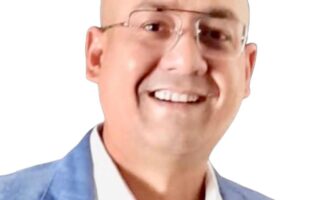The Broadcaster
Mock Pak Lum is the managing director of MediaCorp Technologies Pte Ltd, the broadcast transmission infrastructure, operator and service provider for digital and analogue broadcasting services in Singapore. In this capacity he oversees all information technology, engineering and transmission activities for Singapore’s main broadcaster.
MediaCorp Technologies has extensive knowledge and experience of the development, implementation, operation and maintenance of both Radio and TV transmission stations. Besides its strong foothold in analogue broadcasting, the company has pioneered the rollout of digital transmission both in DAB (Digital Audio Broadcasting) and DVB T (Digital Video Broadcasting to Terrestrial) platforms.
Valentine’s Day 2001 saw MediaCorp launch its TVMobile service, billed as the first channel in the world to pioneer the use of DVB technology to deliver programming to viewers on the move. TVMobile is currently received islandwide on 1,500 public buses, at food courts, on ferries and in some taxis. TVMobile’s infrastructure currently has one main transmitting site, 9 filler transmitting sites and 2 transposers located islandwide. The digital signal is carried via ATM and microwave transmitting medium to the main transmitting site before being retransmitted to the filler sites.
With such a strong DVB-T infrastructure one would assume the migration to DVB-H (DVB Handheld) would be a relatively simple one, but Mock says this is not automatically the case. “We’ve been trialling DVB-H for the past three years and the results have been acceptable,” says Mock.
“But reception problems can arise when viewers want to watch TV on their mobile phones indoors rather than outside. To achieve such depth requires far more base stations than we need for TVMobile.” He says despite Singapore’s small geographic size, the country’s high proportion of tall buildings are another obstacle when broadcasting to mobile.
Another problem Mock outlines is the expectation of the mobile phone viewers. “Mobile phone users expect to have the same reception and coverage as they do for their phone service – but telcos have thousands of base stations to make that happen.” Because of the set-up costs involved, Mock said DVB-H would have to be offered as a subscription-based service (rather than ad-supported) in alliance with a mobile telco operator to leverage their base station infrastructure.
But MediaCorp Technologies must be one of the few broadcastersin the world to have both DVB and DMB capabilities. It manages and operates an island-wide microwave network, the international shortwave radio transmission for Radio Singapore International, as well as both analogue and digital transmission for all MediaCorp TV channels and radio stations. Asia’s first Digital Radio service Smart Radio also comes under the company’s remit.
“Obviously we trialled (broadcast technology) DVB-H because we are a broadcaster, a 3G network is a non-broadcast technology. In my opinion TV via mobile is best done via broadcast, and DVB-H makes sense to us because of our DVB-T infrastructure. But DMB is a variant of the DAB (Digital Audio Broadcasting) digital radio technology currently employed for Smart Radio.”
As to how adoption of broadcasting to mobile technologies will roll out in Asia (excluding Korea which is DMB-dominated), Mock says it’s primarily down to technology and handset cost. “Once the dominant technological standard emerges it will bring the prices down. Singapore is only a small country so we have to follow the standards rather than set them” he concludes.








